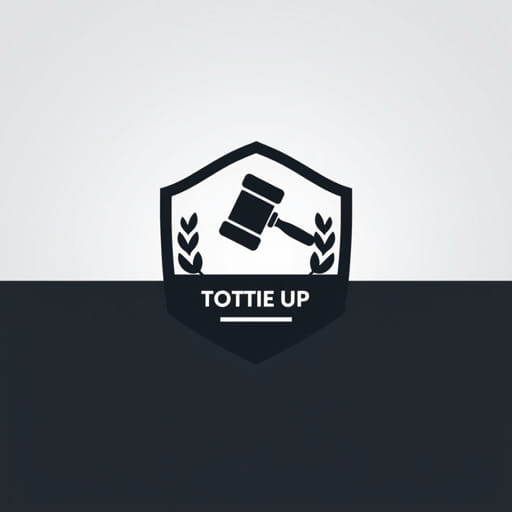In the realm of traffic law, the term ‘totting up’ is commonly used in the United Kingdom to refer to the accumulation of penalty points on a driver’s license. When a driver accumulates too many points within a specified time frame, they face serious consequences, including possible disqualification from driving. But this leads to an important question: is totting up itself considered a criminal offence? Understanding how the totting up process works, the legal implications of accumulating points, and the potential consequences of a disqualification is essential for any motorist navigating the legal system.
Understanding Totting Up in Driving Law
What Is Totting Up?
Totting up refers to the process where a driver accrues penalty points on their driving licence as a result of multiple traffic offences. In the UK, if a driver receives 12 or more penalty points within a three-year period, they are typically subject to a mandatory driving ban under the totting up system. These points can be incurred from various offences such as speeding, using a mobile phone while driving, or running a red light.
Is Totting Up a Crime?
Totting up in itself is not classified as a criminal offence. It is a legal process that results from repeated traffic infractions. Each individual offence that leads to the imposition of penalty points may be considered a criminal matter depending on its severity. However, the accumulation of points the totting up is the consequence of those offences rather than a separate crime.
Consequences of Totting Up
Driving Disqualification
The primary result of totting up is a driving disqualification. When a driver reaches or exceeds 12 penalty points within three years, they can be disqualified for at least six months. This period can be longer for repeat offenders:
- 6 monthsfor a first disqualification
- 12 monthsif the driver has been banned in the last three years
- 2 yearsif disqualified twice in the last three years
The court has discretion when determining the length of the ban and can consider mitigating circumstances. However, unless a successful argument for exceptional hardship is made, the ban is mandatory.
Exceptional Hardship Argument
Drivers facing disqualification due to totting up can present an exceptional hardship argument in court. This involves demonstrating that the loss of driving privileges would result in serious consequences, not just for the driver but also for others, such as family members or employees. Examples may include:
- Losing a job that depends on driving
- Causing financial hardship to dependents
- Impact on a disabled family member’s transportation
Courts do not grant exceptional hardship lightly and evidence must be persuasive. Moreover, hardship that applies to the driver alone (such as inconvenience) is typically not enough.
Offences That Lead to Totting Up
Common Offences and Penalty Points
The types of offences that lead to penalty points vary in severity. Some of the most common include:
- Speeding: 3 to 6 points
- Driving without insurance: 6 to 8 points
- Failing to stop after an accident: 5 to 10 points
- Using a mobile phone while driving: 6 points
- Running a red light: 3 points
While each offence alone may not trigger a ban, the accumulation over time leads to the totting up threshold. It is therefore essential for drivers to take each infraction seriously to avoid reaching 12 points.
Impact of Totting Up on a Driver’s Record
Length of Points on Licence
Penalty points typically remain on a driving licence for four years from the date of the offence. However, only points accumulated within a three-year rolling window count towards totting up. After that, they are no longer considered when determining eligibility for disqualification.
Insurance and Employment Implications
A totting up ban or even multiple penalty points can have a negative impact on car insurance premiums. Drivers with points are considered higher risk by insurers. Similarly, certain employers especially those in transport or logistics may be reluctant to hire or retain drivers with poor records.
Totting Up and New Drivers
Special Rules for New Drivers
The UK has specific rules for new drivers under the New Drivers Act. If a driver gains six or more points within two years of passing their driving test, their licence will be revoked automatically. This is a stricter threshold than the standard 12-point rule and is intended to promote safer driving habits early on.
Once revoked, the driver must reapply for a provisional licence and retake both the theory and practical tests to regain full driving privileges. This revocation is separate from totting up but serves as a warning for how seriously the law views early infractions.
How to Avoid Totting Up
Practicing Safe Driving
The most effective way to avoid a totting up ban is to drive responsibly and within the law. Some practical tips include:
- Adhering to speed limits
- Staying off the phone while driving
- Maintaining proper insurance
- Being attentive to road signs and signals
- Regular vehicle maintenance to prevent legal issues
Seeking Legal Advice
If you receive a notice of intended prosecution or are summoned to court for a traffic offence, it’s wise to seek legal advice. A solicitor with experience in motoring offences can help you understand the charges, the points you may face, and how to present your case if necessary.
Totting up is not, in itself, a criminal offence it is the result of accumulating penalty points from multiple traffic violations. However, the implications of totting up can be severe, including a mandatory driving disqualification and potential long-term impacts on a driver’s personal and professional life. While courts may consider exceptional hardship, success is not guaranteed. Preventing totting up is best achieved through consistent, responsible driving and an understanding of how each offence adds to your driving record. Knowing your rights and responsibilities as a driver is key to staying on the road legally and safely.
